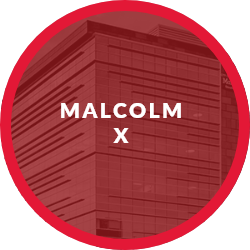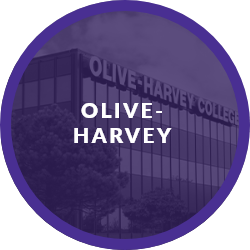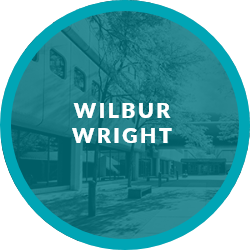Dear City Colleges Community and Friends –
On behalf of the Wright College community, I am delighted to share progress on Wright College’s Strategic Plan. Thanks to the guidance and support of Chancellor Salgado and the City Colleges of Chicago strategic planning framework, our college is making steady and impressive progress. Wright faculty, staff, students and community members have come together through the Strategic Plan, working in tandem to increase student access, retention, and success with a focus on equity. Service to the community and our students remain paramount. With the Strategic Plan as our compass, Wright has prioritized, integrated and innovated to fulfill our mission.
Collaboration and communication undergird the Strategic Plan. Faculty, staff and students have participated in every aspect of the plan’s development and implementation, from ideation through review, assessment and adjustments of programs. As a guiding effort, the Strategic Plan has been shaped and informed by other college planning efforts. The Equity Plan, Strategic Enrollment Management Plan, and Campus Action Plan have been essential, as has the regular review of data to direct priorities. Wright is committed to continuous improvement in service of inclusive excellence. Collectively, all these efforts and a focus on equity across the college and programs have helped the college focus resources and attention.
With the Strategic Plan now in its third year, oversight rests with Wright’s Executive Council. The college’s primary decision-making body, Executive Council is chaired by the president and brings all college leadership, including faculty council and the student government association, together regularly throughout the year. A feature of every Executive Council meeting is the sharing and review of data, from high level KPIs to leading indicators at program levels. Consequently, Wright’s Strategic Plan is linked to all of the college’s functions. Wright’s Strategic Plan is active, dynamic, and adapting to ongoing opportunities and challenges.
Wright’s Strategic Plan played a critical role in the drafting of the college’s work for reaccreditation with the Higher Learning Commission. A team from HLC visited in October, affording the college an opportunity to showcase successes and areas of ongoing work. Central to Wright’s initiatives are acceleration of learning outcomes assessment in instruction and co-curriculum, as well as heightened intentionality around planning, review of data, and processes to assess and improve campus climate. Wright has long been focused on improvements in student retention, particularly through an expansion of first year programming. We are justifiably excited about gains, especially in seeing equity gaps decreasing in the first year. The successes have also challenged the college to go deeper in augmenting student supports.
Student engagement, a key component in Wright’s Strategic Plan, has been another source of improvement and attention. With now more than 40 student clubs and organizations, Wright’s two campuses are filled with engaged and active students. The college’s gym and fitness center are booked throughout the day. Aquatics has returned and numbers are growing. With a full bench in women’s and men’s varsity basketball teams, Wright has set the foundation for varsity women’s volleyball and men’s soccer in the coming year. Retention of student athletes is high, demonstrating the effectiveness of student cohorts with coordinated support from student services professionals and faculty. The college is piloting other efforts along like fronts, bringing together students who are undecided, students who are interested in business, and students who hope to transfer to elite institutions. Last year, Wright College was thrilled that three students secured the prestigious Jack Kent Cooke Scholarship, providing up to $110,000 in support for transfer. These were the only awards in the state of Illinois.
Wright has expanded its first-year experience supports, a key initiative structured through the strategic plan. We have increased mentoring, peer-mentoring, and the “cohortization” of students and student support. Focused outreach and communication have helped to support Early College students, students taking developmental education courses, and students with other specific interests and needs. Mos importantly, this work is collaborative and integrated across Wright. The Strategic Plan helps to further cross functional work, providing a valuable framework for planning, implementation, review and adjustment.
Wright College is proud to announce that through the Strategic Planning process, the college sought and received designation from the Carnegie Foundation as a Community Engaged Institution. As one of only two community colleges in Illinois to earn this recognition, Wright continues to focus on service in and to the community. We have made a faculty-led Day of Service an annual event. The college’s participation in other community groups and activities has likewise grown, and we are particularly excited about deeper relationships with the Dunning Reed Conservation Center.
Community work and service has expanded through Wright College’s Adult Education programs. Enrollment, especially in English as a Second Language, has significantly increased. Accordingly, Wright has bolstered staff and strengthened relationships with community-based organizations. The college sought and has received approval to hire two America Corps Vistas to assist Adult Education build capacity with these groups. The college’s Wright Access program, supported by an Illinois Department of Commerce and Economic Opportunity Grant, offering training to students with intellectual and developmental difficulties from two Chicago Public High Schools, is meeting its enrollment, completion and placement goals. Working in partnership with Eli’s Cheesecake, the program brings together different organizations and businesses in support of students. The successes have been extremely gratifying, and the college has applied for additional funding to expand the program. It is a visible effort that highlights Wright’s commitment to community and mission.
Highlighted in the Strategic Plan and truly central to the college’s commitment to equity and excellence, Wright’s Center of Excellence in Engineering and Computer Science continues to grow. With more than 500 students in the program, Wright is hiring faculty and staff, as well as looking at new models to support this wonderful effort. A student research laboratory space has been completed. Through new furniture, lighting and design, the college has created more and different spaces for students in the Center of Excellence students to study. It is essential to stress that Center of Excellence students reflect the diversity of Chicago. They retain, graduate, transfer and succeed at baccalaureate institutions at extremely high rates. The Center of Excellence is a jewel and the college forecasts continued growth and impact.
Lastly, I want to call attention to the many challenges our students face. While the pandemic has passed, we continue to see evidence of the harm it has caused students and staff. Central to Wright’s work to create a healthier and more supportive environment across the college is our work with JED Foundation. Called out in the Strategic Plan, this work to establish a trauma-informed college, with support across units and greater direct efforts for our students, is foundational to the college’s values. Wright’s Wellness Center is at the heart of this initiative, supported by faculty and staff across the college. We have increased mental first aid training, professional development, and other efforts to ensure that all who work at Wright are student ready, inclusive, and cognizant of the multitude of barriers our students face every day.
We will continue to prioritize our students. It is woven into the college’s mission and values and supported through the Strategic Plan and the City Colleges of Chicago system. Wright is very well situated to address challenges head on, to continue to grow and adapt through changing conditions, while remaining fixed on our north star: inclusive excellence. In this and coming years we seek improved student retention and completion, greater impact in the community, and continued student success. We are proud to be one of seven strong.
David Potash
President
Wright College















